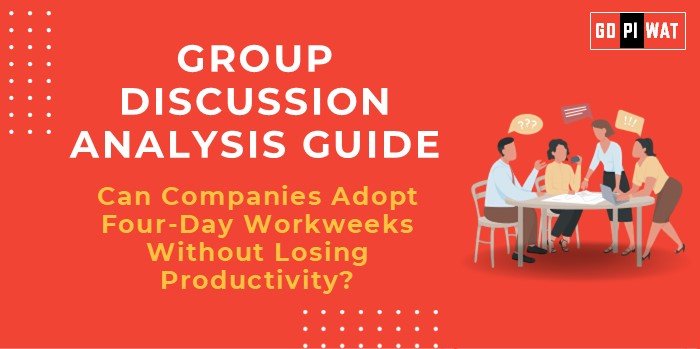📋 Can Companies Adopt Four-Day Workweeks Without Losing Productivity?
🌐 Introduction to the Topic
Context: The concept of a four-day workweek has been gaining traction globally as organizations seek to balance employee well-being with productivity. Countries like Iceland and companies such as Microsoft Japan have piloted this approach, reporting encouraging results. In a post-pandemic world shaped by remote work and employee-centric policies, the debate around adopting a four-day workweek is increasingly relevant for businesses striving to remain competitive and employee-friendly.
📊 Quick Facts and Key Statistics
- 📈 Microsoft Japan: Reported a 40% increase in productivity after implementing a four-day workweek pilot in 2019.
- 🌍 Iceland: Trials covering 2,500 workers found productivity either remained stable or improved.
- 📊 Gallup Study: Nearly 63% of employees consider a four-day workweek a major incentive for retention and engagement.
- 🏛️ UAE Government: Reduced the workweek to 4.5 days in 2022 to improve well-being.
- 📉 Productivity Myth: OECD data shows countries with shorter workweeks (e.g., Netherlands, Germany) consistently rank among the most productive globally.
👥 Stakeholders and Their Roles
- 🏢 Employers: Assess productivity, employee satisfaction, and financial implications of a reduced workweek.
- 👩💼 Employees: Adapt work habits to meet goals while enjoying work-life balance benefits.
- 🏛️ Governments: Consider policy support, incentives, and labor reforms to encourage adoption.
- 📊 Researchers/Consultants: Provide data and frameworks to measure effectiveness.
- 🛍️ Customers/Clients: Adjust expectations for communication and turnaround time.
🏆 Achievements and Challenges
🌟 Achievements
- 📈 Increased Productivity: Trials in Iceland and Japan demonstrated no productivity loss and even gains up to 40%.
- 😊 Employee Satisfaction: A four-day workweek reduces burnout and improves retention.
- 💡 Cost Savings: Companies report savings in energy usage and office costs.
- 🎯 Competitive Advantage: Attracts top talent by offering work-life balance.
⚠️ Challenges
- 💼 Overloaded Workdays: Employees may struggle to complete tasks in four days, leading to stress.
- 🏭 Industry-Specific Constraints: Sectors like healthcare, manufacturing, and customer service face operational hurdles.
- 📉 Risk of Productivity Loss: Without proper planning, productivity could decline.
🌍 Global Comparisons
- 🇮🇸 Iceland: A two-year trial covering public sector employees showed success in work-life balance.
- 🇪🇸 Spain: Pilot programs in 2021 tested the economic feasibility of the shorter workweek.
- 🇳🇿 New Zealand: Companies like Perpetual Guardian improved productivity while reducing hours.
📖 Case Study: Microsoft Japan
- 📊 Outcome: A four-day workweek pilot in 2019 led to:
- 📈 40% increase in productivity.
- 💡 23% reduction in electricity consumption.
- 😊 Improved employee satisfaction scores.
🗣️ Structured Arguments for Discussion
- ✅ Supporting Stance: “Adopting a four-day workweek enhances productivity and employee well-being without compromising output, as evidenced by global trials.”
- ❌ Opposing Stance: “While promising in concept, a four-day workweek may overload employees and reduce productivity in industries requiring constant operations.”
- ⚖️ Balanced Perspective: “The four-day workweek has proven benefits in some industries but requires tailored implementation, considering organizational needs and employee adaptation.”
💡 Effective Discussion Approaches
📌 Opening Approaches
- 📊 Statistical Start: “Microsoft Japan’s four-day workweek trial resulted in a 40% increase in productivity—can Indian corporations achieve similar success?”
- 🔄 Contrasting Approach: “While Iceland’s trials succeeded, industries like manufacturing face challenges in reducing work hours without disruptions.”
↔️ Counter-Argument Handling
- 💬 Argument: “Reduced hours will lower productivity.”
- 📈 Counter: “Global examples from Japan and New Zealand show productivity increased due to focused work during shorter hours.”
📋 Strategic Analysis of Strengths and Weaknesses
📊 SWOT Analysis
- 💪 Strengths: Improved productivity and well-being; cost savings on operations.
- ⚠️ Weaknesses: Workload compression risks; unsuitable for some industries.
- 🌟 Opportunities: Greater employee engagement and retention; competitive advantage in hiring talent.
- 🚧 Threats: Mismanagement leading to burnout; customer dissatisfaction in time-sensitive sectors.
🎓 Connecting with B-School Applications
- 📂 Real-World Applications: Use cases in operations management for improving efficiency; HR strategies to boost retention and reduce burnout.
- 💡 Sample Interview Questions:
- ❓ “How can companies ensure productivity in a four-day workweek model?”
- ❓ “Would you recommend the four-day workweek for a manufacturing company? Why or why not?”
- 📖 Insights for B-School Students: Analyze the feasibility of reduced workweeks in diverse industries; develop strategies for implementation with a focus on outcomes and efficiency.


